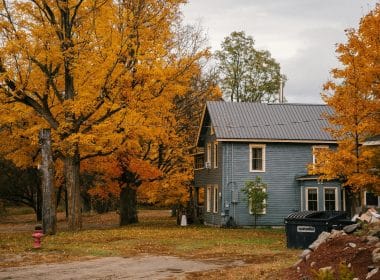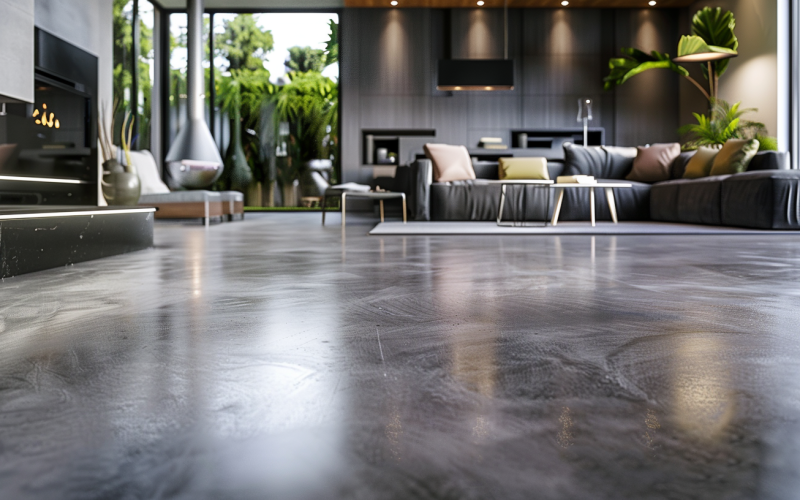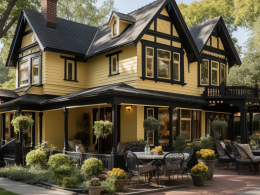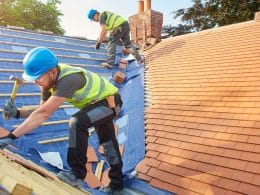Wood floors are a timeless and beautiful feature in many homes. Over time, they can become worn, scratched, or dull. Traditional refinishing methods often involve full sanding, which can be time-consuming, messy, and expensive.
However, there are alternative techniques that can breathe new life into your floors without extensive sanding. This article will explore the process of refinishing wood floors using less invasive methods.
These techniques provide you with a cost-effective and efficient way to restore the beauty of your hardwood flooring.
Understanding the Need for Refinishing
Before diving into the refinishing process, it’s important to understand why wood floors may need refreshing. According to the National Wood Flooring Association, hardwood floors can last for generations with proper care. However, they typically need refinishing every 7–10 years, depending on foot traffic and maintenance.
Factors such as sun exposure, pet scratches, and general wear and tear can all contribute to the deterioration of your floor’s finish. When you notice these signs of wear, it’s time to consider searching for wooden floor refinishing near me to find local professionals who can restore your floors to their former glory.
Proper refinishing not only enhances the appearance of your hardwood floors but also extends their lifespan, making it a worthwhile investment for homeowners.
Assessing Your Floor’s Condition
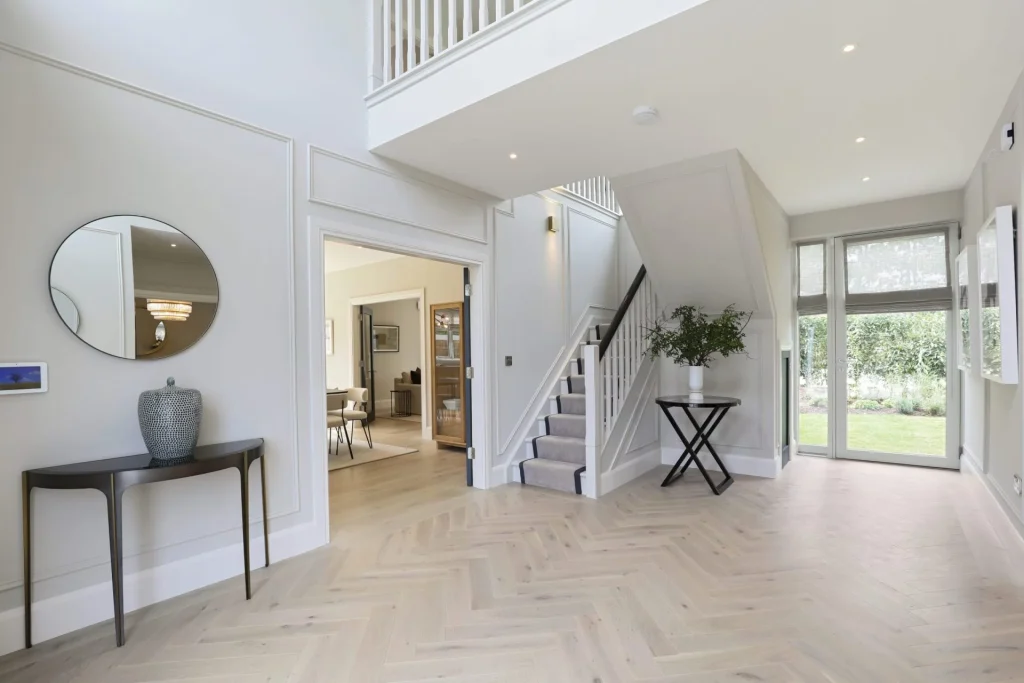
The first step in refinishing your wood floors without full sanding is to assess their current condition. Look for signs of wear such as light scratches and scuffs, dull or faded areas, minor discoloration, or slight unevenness in the finish.
If your floors exhibit these issues but don’t have deep gouges, severe damage, or significant unevenness, they may be good candidates for refinishing without full sanding.
To help you identify common issues and their solutions, refer to the following table:
Table 1: Common Wood Floor Issues and Recommended Solutions
|
Issue |
Description |
Recommended Solution |
|---|---|---|
|
Light Scratches |
Superficial marks on the finish |
Screen and recoat |
|
Dull Finish |
Loss of shine or luster |
Screen and recoat or chemical etching |
|
Deep Scratches |
Scratches that penetrate the wood |
Full sanding and refinishing |
|
Cupping or Warping |
Edges higher than center of board |
Address moisture issues, then full sanding |
|
Discoloration |
Uneven color or dark spots |
Chemical etching or full sanding |
|
Gaps Between Boards |
Visible spaces between planks |
Humidity control, possibly filler for large gaps |
Refinishing Methods: A Comparison
There are several methods for refinishing wood floors without full sanding. The most common are the screen and recoat method and chemical etching. Let’s compare these methods along with full sanding to help you understand your options:
Table 2: Comparison of Refinishing Methods
|
Method |
Time Required |
Dust Level |
Cost Range (per sq ft) |
Best For |
|---|---|---|---|---|
|
Full Sanding |
3–5 days |
High |
$3-$8 |
Severely damaged floors |
|
Screen and Recoat |
1–2 days |
Low |
$1-$3 |
Lightly worn floors |
|
Chemical Etching |
1–2 days |
Very Low |
$2-$4 |
Floors with tough finishes |
The Screen and Recoat Method
One of the most popular methods for refinishing wood floors without full sanding is the screen and recoat process. This technique involves lightly abrading the existing finish and applying a new topcoat. Here’s a step-by-step guide:
- Preparation: Clear the room and clean the floor thoroughly. Repair any loose boards or visible nails.
- Screening: Use a floor buffer with a fine-grit screening pad to lightly abrade the existing finish.
- Cleaning: Vacuum and tack the floor to remove all dust and debris.
- Applying New Finish: Use a high-quality polyurethane or other wood floor finish, applying it evenly with a foam applicator or brush.
- Drying and Curing: Allow the finish to dry completely, following the manufacturer’s instructions for drying and curing times.
Chemical Etching: An Alternative Approach
For floors with a bit more wear or those that don’t respond well to screening, chemical etching can be an effective alternative. This method uses a chemical solution to etch the existing finish, creating a surface that will accept a new topcoat. Here’s how it works:
- Clean the floor thoroughly and allow it to dry completely.
- Apply the etching solution according to the manufacturer’s instructions, typically using a mop or applicator.
- Allow the solution to work for the recommended time, usually 10–15 minutes.
- Neutralize the etching solution and clean the floor again.
- Once dry, apply a new finish as you would in the screen and recoat method.
Benefits of Refinishing Without Full Sanding
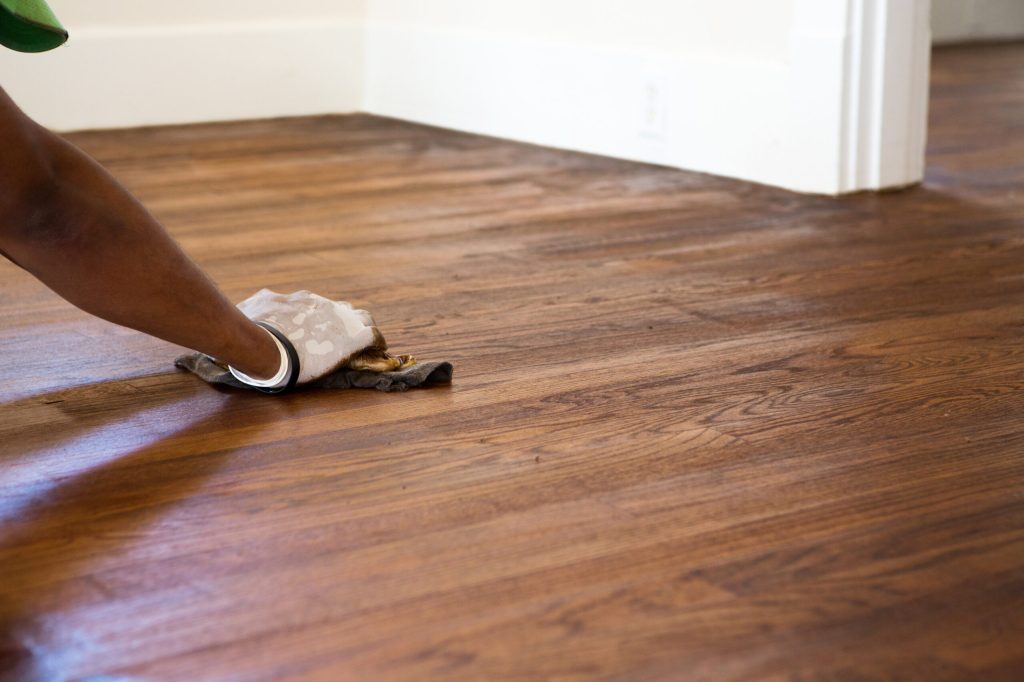
Opting for these less invasive refinishing methods offers several advantages:
- Cost-Effective: Screening and recoating can cost as little as $1-$3 per square foot, potentially saving homeowners thousands of dollars on larger projects.
- Time-Saving: These methods can often be completed in a fraction of the time required for full sanding and refinishing.
- Less Dust and Disruption: Minimal sanding means less dust in your home and a quicker return to normal living conditions.
- Extends Floor Life: Regular maintenance refinishing can significantly extend the life of your hardwood floors.
- Environmentally Friendly: Less sanding means fewer wood particles removed from your floor, conserving natural resources and reducing waste.
Limitations and Considerations
While refinishing without full sanding can be an excellent option for many homeowners, it’s not suitable for all situations. Consider the following:
- Severe Damage: Deep scratches, gouges, or significant wear may require full sanding to address.
- Multiple Layers of Finish: If your floor has been refinished many times, the buildup of finish may necessitate full sanding.
- Uneven Coloration: Floors with significant colour variation or staining may not achieve an even appearance without sanding.
- Type of Existing Finish: Some finishes, particularly wax-based ones, may not be compatible with screen and recoat methods.
According to a survey by the National Wood Flooring Association, approximately 35% of homeowners who refinish their wood floors opt for less invasive methods like screening and recoating, indicating a growing trend towards these techniques.
Maintaining Your Refinished Floor
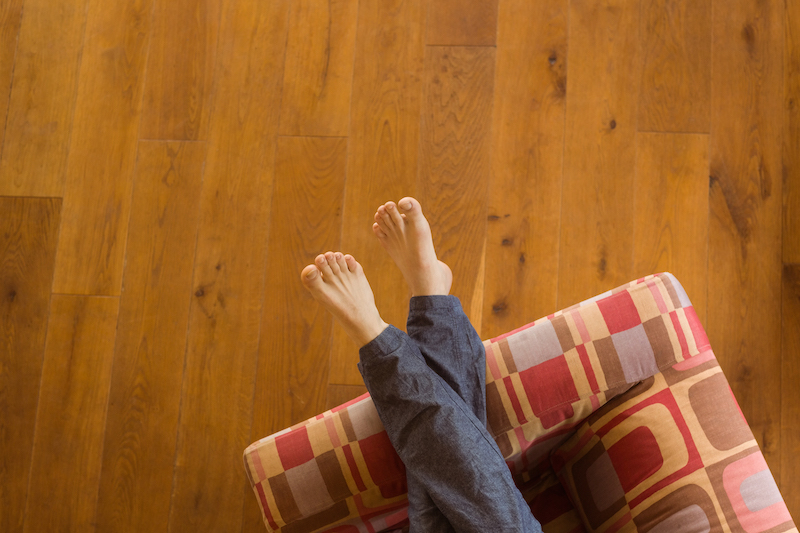
After refinishing your floor, proper maintenance is key to preserving its beauty and extending the time between refinishing treatments. Here are some tips:
- Clean regularly with a soft broom or dry mop.
- Use cleaning products specifically designed for wood floors.
- Place mats at entrances to trap dirt and moisture.
- Use furniture pads to prevent scratches.
- Avoid wearing high heels or shoes with damaged soles on the floor.
- Maintain consistent indoor humidity levels (35-55%) to prevent wood expansion and contraction.
The Hardwood Distributor’s Association reports that proper maintenance can extend the life of a hardwood floor finish by up to 50%, making it a worthwhile investment of time and effort.
Summary
Refinishing wood floors without full sanding offers a cost-effective, time-efficient, and less disruptive alternative to traditional refinishing methods. By understanding your floor’s condition and choosing the appropriate technique, whether it’s screening and recoating or chemical etching, you can restore the beauty of your hardwood floors with minimal hassle.
Remember to assess your floor’s condition carefully, follow the proper steps for your chosen method, and maintain your newly refinished floor to ensure long-lasting results. With these techniques at your disposal, you can keep your wood floors looking their best for years to come, preserving both their beauty and value in your home.

